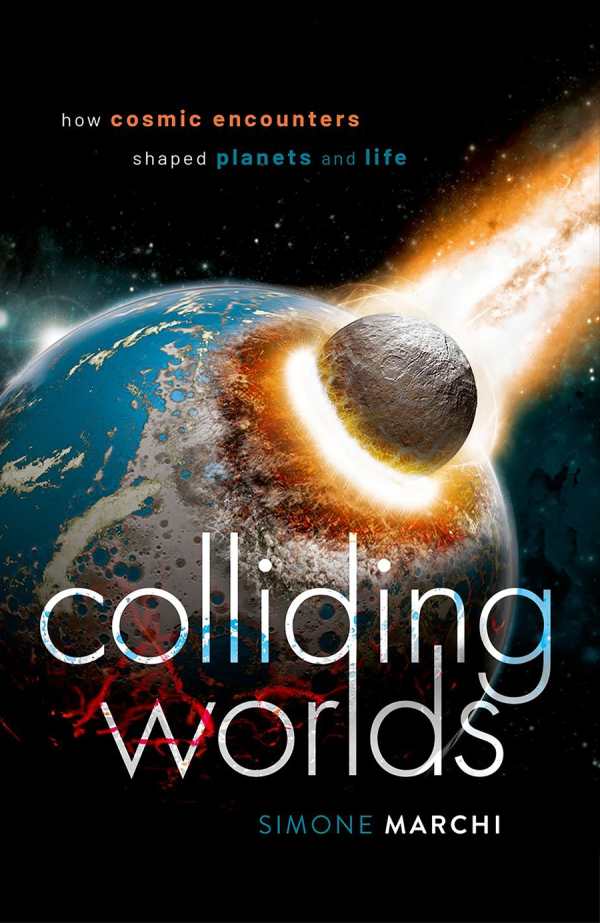Colliding Worlds
How Cosmic Encounters Shaped Planets and Life
“Planets are born from the chaos of countless collisions,” Simone Marchi writes in Colliding Worlds, which cites everything from lunar craters to gold seams as evidence of interplanetary impacts.
Space rocks have not existed from the beginning of time, but are due to collisions between smaller objects, Marchi says. These rocks, in turn, are responsible for the many craters visible on the surface of Earth and the Moon. The asteroid that wiped out the dinosaurs about 65 million years ago paved the way for human life, while early impacts deposited precious metals, he notes; similar incidents on other planets could also create the conditions necessary for life. And in the years to come, artifacts of space collisions may aid in the search for extraterrestrial life: signs of past water on Mars are our best indication that it may once have hosted life, so the Mars 2020 mission is continuing that search.
Marchi, who grew up near Galileo’s hometown, reports on recent findings from telescopes and space operations, while also drawing on his involvement in NASA’s Dawn mission to the asteroid Vesta, which launched in 2007. The book’s color plates and in-text illustrations, including simulations, maps, and photographs of craters, bring the cosmic closer to home.
The latest research still builds on the foundation of the earliest astronomers’ knowledge, so Marchi gives background information on Kepler’s hierarchical organization of the planets—heliocentric like Copernicus’s. The narrative alternates between history and speculation and is always tailored to the layperson’s comprehension and interest. Occasional fanciful metaphors result in verve, as when Marchi describes planetesimals as being like the “crumbs left on a table after some Pantagruelic feast.”
From the solar system’s formation to the prospects for future discoveries in space, Colliding Worlds depicts the dramatic sweep of cosmic events.
Reviewed by
Rebecca Foster
Disclosure: This article is not an endorsement, but a review. The publisher of this book provided free copies of the book to have their book reviewed by a professional reviewer. No fee was paid by the publisher for this review. Foreword Reviews only recommends books that we love. Foreword Magazine, Inc. is disclosing this in accordance with the Federal Trade Commission’s 16 CFR, Part 255.

